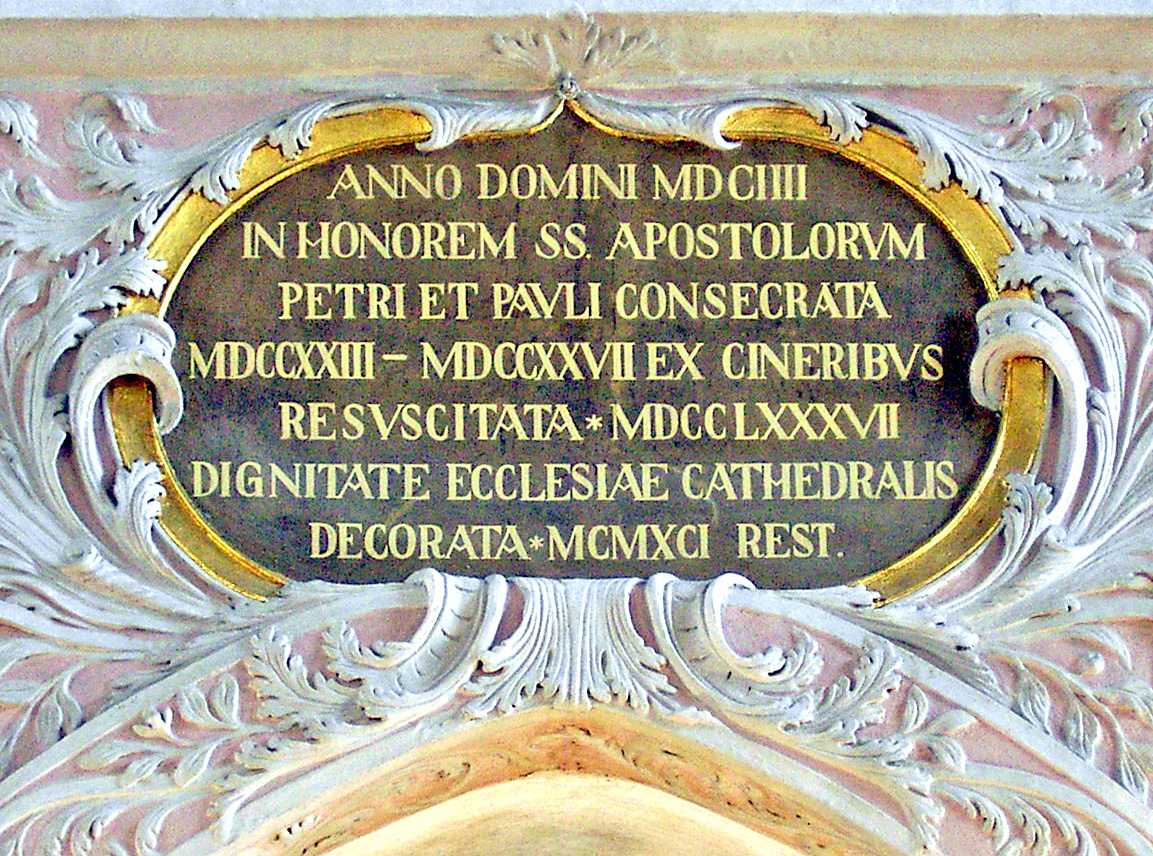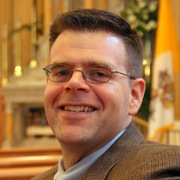 -Klagenfurt Cathedral, Austria, Charlemagne promoted the usage of the Anno Domini epoch throughout the Carolingian Empire, please click on the image for greater detail
-Klagenfurt Cathedral, Austria, Charlemagne promoted the usage of the Anno Domini epoch throughout the Carolingian Empire, please click on the image for greater detail

-by Steve Weidenkopf
“Time is an essential component of the Christian Faith because Christians believe that the Second Person of the Holy Trinity became flesh and entered human history. From the earliest centuries, Christians focused on chronology and dating important events in salvific history.
The ancient world was also concerned with time and calendars to mark religious, cultural, and political events. The Sumerians, Babylonians, Persians, Egyptians, Chinese, Greeks, and Romans (and others) created calendars. The Jewish people crafted a calendar (based on the lunar months) that was modified throughout their history.
The early Church, being born into the Roman Empire, had its understanding of time and dating impacted by the Julian and Jewish calendars. One of the first crises in Church history concerned the proper method for dating the celebration of Easter. In the eastern provinces many Christians used the Jewish method for dating Passover so that Easter was celebrated on the fourteenth day of the Jewish month of Nisan, regardless of the day of the week. The Church in Rome, as well as in Alexandria and Jerusalem, celebrated Easter on the first Sunday after the first full moon of the vernal equinox. The different methods for calculating the celebration of Easter became such a contentious issue that the revered St. Polycarp (d. 155) traveled to Rome to meet with Pope St. Pius I (r. 140-155) to discuss the matter, which was not officially resolved until the fourth century, when the Council of Nicaea mandated the Roman method.
After the early fourth-century Great Persecution under the Emperor Diocletian (r. 284-305), the Church marked events with the nomenclature the Era of Martyrs to highlight the sacrifice of these brave witnesses of the Faith and to replace the prevailing Era of Diocletian, which dated documents based on the emperor’s reign. This nomenclature remained in effect until the sixth century, when the monk Dionysius (d. 544), nicknamed “Exiguus” (meaning “the little” and used, more than likely, as a self-deprecating title) introduced the Era of the Incarnation as a dating method.
Dionysius was a native Greek-speaker who also knew Latin. He desired to make the writing of Greek theologians accessible to Latin-speakers, so he spent most of his time translating various works. He also had an interest in chronology. Dionysius believed that time should not be dated according to the reign of Diocletian, the great persecutor of the Church, but rather should be centered on the birth of Christ. Adopting this method would erase the memory of Diocletian and highlight Jesus, who entered human history in the Incarnation.
Dionysius Exiguus’s Era of the Incarnation was used first in Italy and then later in some areas of Spain, but widespread use first began in England, where the method was adopted at the Synod of Whitby in 664 AD.
The next important event in the Christian marking of time was the designation of events as “Before Christ (B.C.)” and as Anno Domini, “The Year of the Lord,” (A.D.), which had been utilized earlier but became well known from the works of the English saint and Doctor of the Church Bede the Venerable (672-737). As a young boy, Bede was entrusted to an abbot of a Northumbrian Benedictine monastery for his education. Recognized for his intellect, Bede was a brilliant student who loved learning. He studied Scripture and wrote commentaries on the Pentateuch and the Gospels. His greatest influence was exerted in historical writings, especially through his book on the Ecclesiastical History of the English Peoples. Bede told the story of the English making reference to the dating of events in the “Year of the Lord” (Anno Domini).
Bede recognized that Christ is the center of history and that the telling of time should be rooted in a chronology based on the Incarnation. Bede produced other chronological words, including On the Reckoning of Time, in which he recounted the history of the world from Creation to his own time in eighth-century England.
Despite the influence of Bede’s writings, widespread application of dating events as A.D. did not occur until the time of the Charlemagne in the early ninth century. The king of the Franks and emperor was the first major secular ruler to mandate the use of A.D. as a dating device throughout his empire. But even with Charlemagne’s endorsement, the method was not utilized by the papal chancery until the tenth century. Eventually, the method became the universal standard of dating in the West and remained so until the modern age.
After centuries of acceptance, the use of B.C./A.D. as the standard dating convention has come under attack in the post-Enlightenment world because of its association with Christ. Secular humanists, including various academics and scientists, have embraced the use of “Common Era (C.E.)” and “Before the Common Era (B.C.E.)” to replace A.D. and B.C. in the spirit of “inclusivity” so that non-Christians are not offended by the dating methodology.
Some proponents of B.C.E./C.E., which changes merely the nomenclature and not the Christian dating baseline, advocate that the change is not a “politically correct” attempt to denigrate Christians but is based on historical usage in the scientific and academic communities since the seventeenth century and is more exact than B.C./A.D. Other commentators believe that the use of B.C./A.D. is rooted in Christian anti-Semitism and akin to a Christian conquest of time or even a form of colonization. Accordingly, some academics now criticize the use of B.C.E./C.E. because the terms attempt to hide the Christian connection (like a “yellow sticky note,” in the phrase of one academic) rather than celebrate the world’s diversity.
Regardless, the use of B.C.E./C.E. is common in the modern world, with some countries (England, Wales, Australia) mandating its usage in official school curriculum. The terminology is common in textbooks and popularly written histories in the United States as well.
How should Catholics approach this terminology? Names and terms are important, and their usage communicates beliefs and convictions. (For example, the use of the term anti-abortion rather than pro-life by various news organizations illustrates their position on the issue.) In a modern world where speech is weaponized and where propaganda flourishes, it is vital for Catholics to use language and terms that reflect Christian belief and history. The use of B.C./A.D. proclaims that the truth that the Incarnation was the central event in human history and that Jesus is the Lord of history, and so it is proper and praiseworthy to continue to utilize this centuries-old terminology.”
Love & truth,
Matthew
